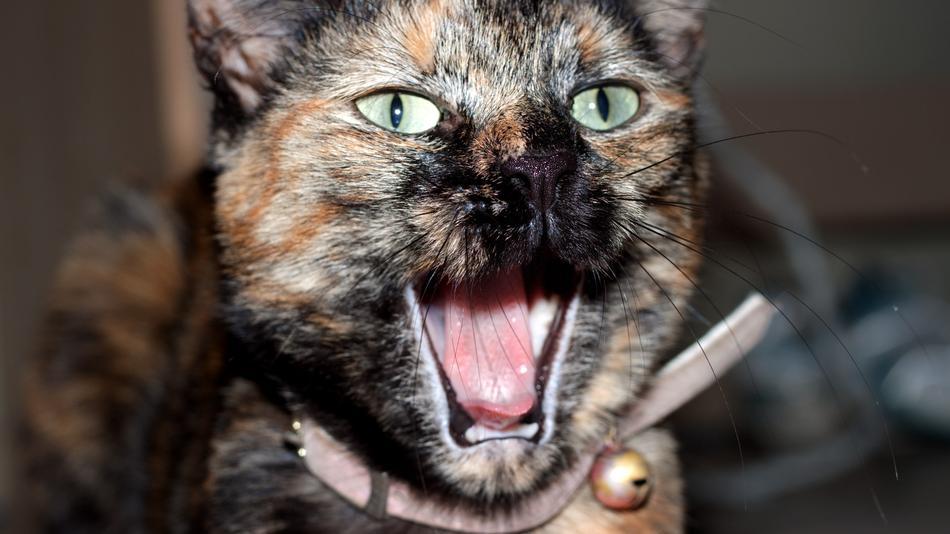– Lost Cat Travels Two Months, 200 Miles Home (Mashable, Jan 25, 2013):
A tortoise-shell cat similar to the one pictured above became separated from its family in Daytona Beach, Fla., and then managed to find its way to West Palm Beach after a two-month, nearly 200-mile journey.
The four-year-old indoor cat, named Holly, is owned by Jacob Richter, 70, and Bonnie Richter, 63, who began traveling around in an R.V. with Holly last year. During a vacation this past November to Daytona, the cat dashed out an opened door. The Richters called local animal agencies and posted fliers, but Holly never turned up. They returned home. Two weeks later, an animal rescue worker called the Richters to tell them that a cat resembling Holly had been sited in Daytona.
And then nearly two months later, on New Year’s Eve, a woman who lived about a mile away from the Richters found an underweight, dehydrated and weakened cat in her backyard who could barely meow. The woman, Barb Mazzola, and her children fed and cared for the cat for six days, finally coaxing it into the house. Mazzola took the cat to a vet, who scanned it for an implanted microchip. Indeed, there was a chip, which lead directly back to the Richters.
How an indoor cat made such a long journey across unfamiliar territory is a mystery.
“I really believe these stories, but they’re just hard to explain,” Marc Bekoff, a behavioral ecologist at the University of Colorado told the New York Times. “Maybe being street-smart, maybe reading animal cues, maybe being able to read cars, maybe being a good hunter. I have no data for this.”
Back in September, 2011, Willow the cat (pictured above) was found in New York City fives years after she went missing in Boulder, Co. How Williow got to the Big Apple remains a mystery, but she was also positively identified thanks to an implanted microchip.
But how domestic cats find their way is not something researchers devote much time to studying. A handful of experiments, however, give clues. Back in 1954, British cat biologist, Roger Tabor placed cats in a covered circular maze that had exits every 15 degrees. Most of the cats used the exit that pointed in the direction of their homes. And more recently, researchers in the Kitty Cams Project attached video cameras to 55 pet cats and recorded their behavior. The study found that some cats visited other homes for food and affection, crossed roads and ate and drank things from the wild.
Holly’s mother was feral and it’s possible that Holly has some wild cat instincts, but how she found her way home is still a mystery. Only Holly knows what happened those two months and she’s not saying a word.
Photo courtesy of Flickr, funnyface_6
